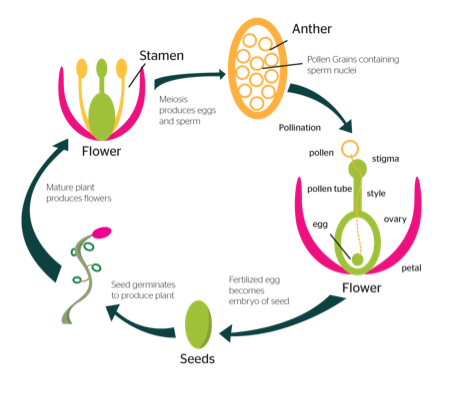Sign up for FlowVella
Sign up with FacebookAlready have an account? Sign in now
By registering you are agreeing to our
Terms of Service
Loading Flow

Reproduction

Flowering plants reproduce sexually. The plant may contain the female parts (the eggs) in an ovary or the male parts. (Stamen, Anther) Pollen lands on the stigma of the female flower. This pollen is transported by bees who drink nectar from the flowers and have pollen stuck in their hair. It then travels down to the egg in the ovary. One sperm fertilizes the egg and the other sperm fertilizes the central cell makes the endosperm and feeds the new plant until it can make it's own food through photosynthesis.
Asexual reproduction: generates offspring that are genetically identical to a single parent. More likely to die from disease.
Sexual reproduction: two parents contribute genetic information to produce unique offspring.